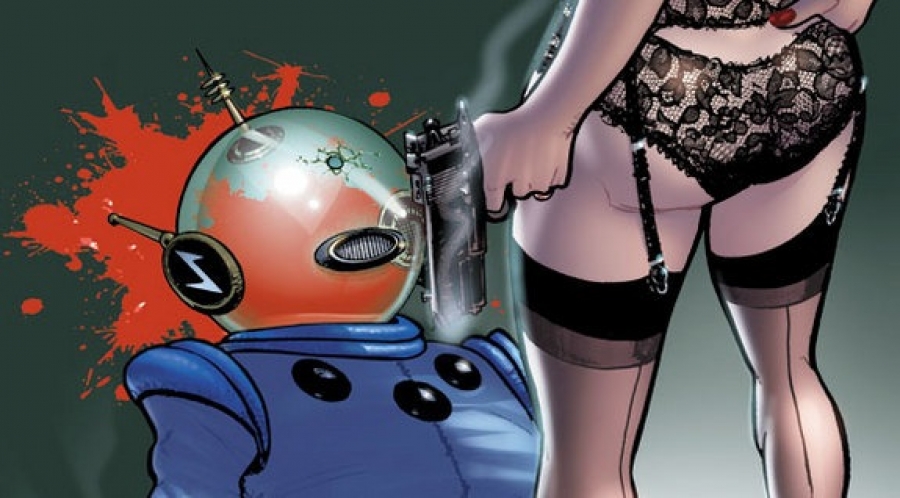The year is 1951. Television is in its infancy, still competing with radio to bring popular entertainment directly into people’s homes. It’s not glamorous, it’s not high art, it’s kids’ stuff, and the truth behind the scenes is often far more shocking – and less attractive – than what gets tossed across the airwaves. Enter Matt Fraction and Howard Chaykin’s Satellite Sam, a period noir of the behind-the-scenes at the eponymous children’s space opera.
As the latest episode of Satellite Sam prepares to go live without its star, Carlyle White, the frantic activity of television broadcast swirls around the pages, launching characters and lingo at the reader somewhat relentlessly. This is perhaps Satellite Sam‘s main misstep, introducing too much that feels like it might be going somewhere, giving too many characters only a cursory amount of screen time. There’s the sense (especially from interviews with Fraction and Chaykin about the project) that there’s a lot going on, a lot planned, a lot of depth, but the breadth of it all in this first issue feels overwhelming, so much so that it reads almost like the revelation that Carlyle White is dead (not really a spoiler, since it’s in the solicits) was an afterthought, something that the creators suddenly realized they had forgotten to put in where it needed to be and had to rush it in at the end. Whether or not this is their main plot, or the only one they intend to pursue throughout the series, is somewhat moot; this is the initial hook, the mystery – presumably – that gets the series rolling. (Never mind that it isn’t even clear how White died; we’ll probably need to wait for the second issue to learn whether or not there were suspicious circumstances to his death, though there almost certainly were.)
Satellite Sam is, fittingly, rendered in black and white, which gives it both a certain timely quality and somehow helps to add to the seediness of some of the proceedings. The art doesn’t lack for detail, but if I have one gripe, it’s that the speech balloons have the look of something you might find in a webcomic, hovering over the art instead of feeling part of it (perhaps because they lack borders), and the narrow tails of the balloons get lost in the background easily, sometimes making it hard to trace to whom the dialogue belongs. This is a minor quibble, perhaps, but, as a stylistic choice, it doesn’t feel like it adds much and complicates the process of following particularly talky scenes.
All that said, Satellite Sam is still engaging, and it has the feel of something that’s going somewhere a bit different as it explores the underbelly of the golden age of television. The question is whether you’ll find the individual issue rewarding for where it goes or merely promises to go. To me, it reads more like the first scene of a solid trade paperback than an outstanding issue on its own; one to watch, if not one to follow as it comes.
Three Words from Our Sponsor out of Five

